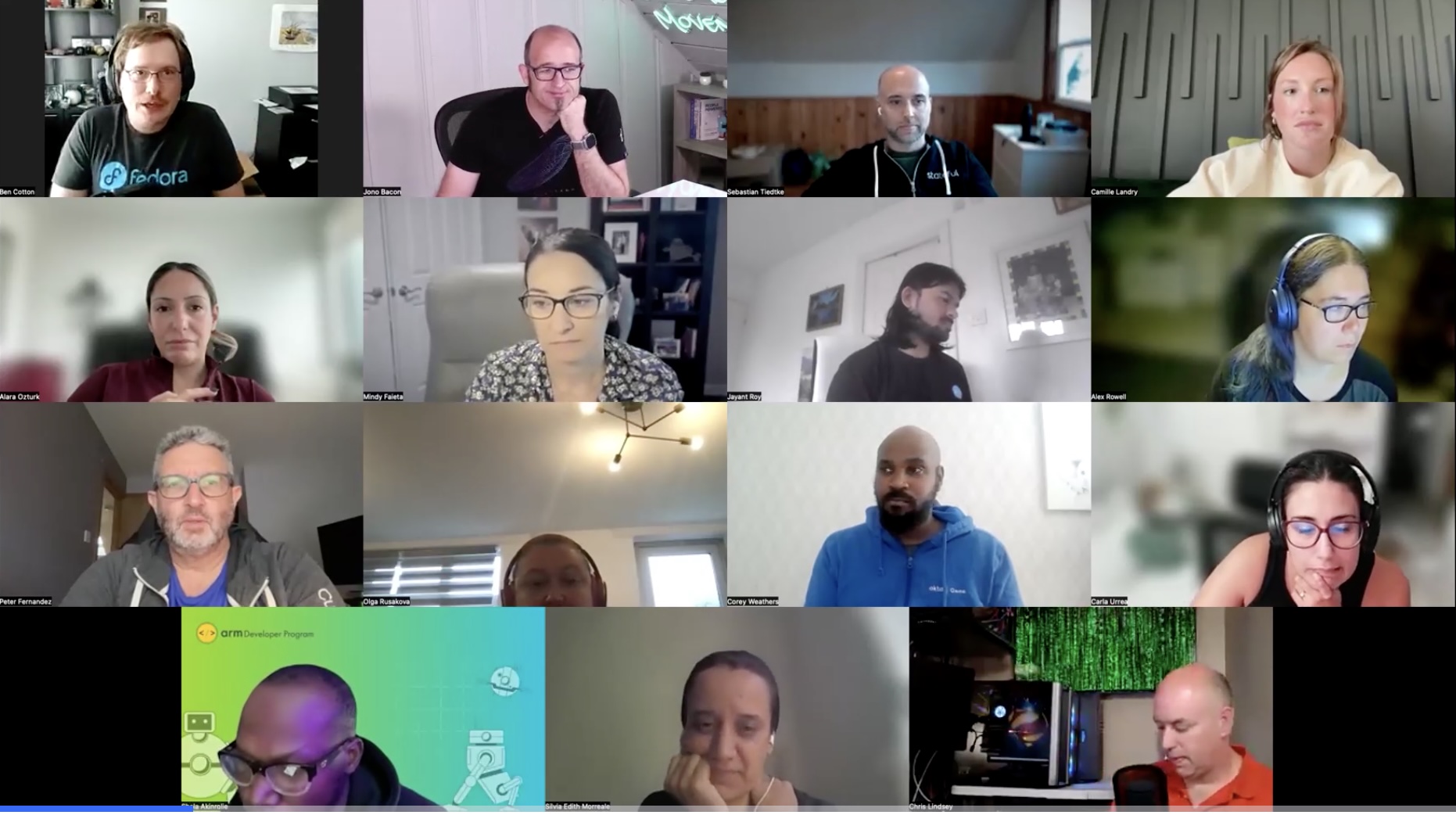Being a community manager requires real leadership work. It’s emotional load, operational clarity, and a constant stream of decisions you have to make with limited time. During a recent Stateshift huddle, several community leaders talked openly about what’s helping them stay effective right now. Not theories. Not best practices pulled from thin air. Actual lessons from people doing this work every day.
What follows is a deeper look at those insights and why they matter for anyone leading a developer community, user group, or product ecosystem. Stateshift works with more than 240 companies on community and DevRel systems, and the patterns here show up everywhere—early startups, scaling SaaS teams, and mature developer platforms.
This isn’t a “5 hacks to change your life” post. This is the stuff community leaders figure out after a few scars.
Cognitive Load Is the Silent Thing That Breaks Community Managers
Most community managers don’t get overwhelmed because they have too much work. They get overwhelmed because their brain is being pulled in twelve directions before lunch.
During the huddle, one member described her day in a way that made everyone on the call nod.
She wasn’t just answering questions.
She wasn’t just planning events.
She wasn’t just handling support queries.
She was switching contexts every few minutes. Between product work, member conversations, internal updates, documentation fixes, event logistics, relationship-building, and reporting. It wasn’t the tasks that burned her out, it was the constant gear-shifting.
Community management creates a special kind of cognitive load:
• You need to stay available without becoming reactive.
• You need to stay helpful without taking on everyone’s needs.
• You need to switch between emotional labor and technical problem-solving.
• You need to hold a long-term vision while juggling short-term requests.
• You need to make judgment calls with incomplete information.
Most jobs don’t make you do all of that in the same hour.
One leader in the huddle said she realized she wasn’t tired because she was doing too much.
She was tired because she was thinking about too many things at once.
Her fix was simple but transformative. She broke her workload into three categories:
- Work that must be done today
- Work that moves the community forward
- Work that can wait, even if someone asks twice
That small act reduced the mental noise. She could focus again. She started ending her days with clarity instead of frustration.
Why it matters:
Cognitive overload doesn’t just drain you. It lowers your judgment, slows onboarding improvements, weakens your presence with members, and makes you more reactive than intentional.
What Stateshift sees:
Across more than 240 developer-first companies, the community managers who last aren’t the ones who push harder. They’re the ones who manage their cognitive load so they can lead with a clear head.

Filtering Ideas — How Community Managers Protect Their Focus
One of the biggest surprises for new community managers is how many ideas come their way. Members share ideas. Leadership shares ideas. Marketing shares ideas. Engineering shares ideas. And somehow every idea arrives with the same energy: this is important.
During the huddle, one community manager admitted she spent months feeling behind—not because she wasn’t productive, but because she was trying to honor every idea that crossed her desk. She described it as “living in a suggestion box that never closes.”
Here’s the thing about community management:
Ideas are not the problem. The volume—and lack of filtering—is.
Strong community managers develop filtering systems because they know most ideas fall into one of three categories:
- Nice to have — interesting, but not impactful
- High effort, low reward — looks promising but won’t move outcomes
- Off-mission — good idea, wrong timing or wrong team
Very few ideas fall into the “move us forward” bucket.
One leader shared her approach, and it changed how the entire room thought about idea evaluation. She created a simple rule:
If an idea doesn’t support the long-term goals of the community, it doesn’t become a task.
It doesn’t matter who proposed it.
It doesn’t matter how excited the room was when it was mentioned.
It doesn’t matter if it sounds creative or innovative.
If it doesn’t move the mission, it doesn’t get attention.
The shift was immediate. Instead of running ten half-finished experiments, she focused on two initiatives that actually aligned with the community’s purpose. Engagement increased. Member retention improved. And the team finally understood the difference between brainstorming and prioritizing.
Why this matters for community managers:
Community work attracts ideas because everyone sees opportunity. But without a filter:
• your roadmap gets fuzzy
• your bandwidth shrinks
• your community sends mixed signals
• your leadership loses clarity on what you’re doing
• your time gets eaten by “interesting,” not “important”
Filtering is not rejecting ideas. It’s protecting the mission.
What Stateshift sees:
Across developer-first companies, the strongest communities are led by people who treat ideas with respect but treat focus like a finite resource. They write down ideas, not chase them. And they let strategy—not enthusiasm—decide what gets attention.
Hiring Goes Smoother When You Stop Hoping and Start Defining
Hiring for community roles is tricky. Community work is part operational, part emotional intelligence, part product understanding, part content, part everything else the company doesn’t realize it needs.
One of our members said her team kept hiring “almost-right” candidates. People who were friendly, talented, and enthusiastic—but not aligned with the community’s real needs.
Things changed when they created a proper candidate profile. Not a generic job description. A breakdown of:
• key responsibilities
• skills they actually needed
• behaviors that mattered
• their philosophy of community
• their experience with technical audiences
• what “good judgment” meant for this role
The next hire was the best one they’d made.
Takeaway:
Before you hire, define the person who will actually succeed. The biggest hiring mistakes in being a community manager happen before the job is posted.
What Stateshift sees:
Across developer communities, unclear hiring profiles slow everything down—onboarding, execution, and leadership trust. Clarity reduces risk.
Self-Care Isn’t a Nice Idea. It’s an Operating Requirement.
Every seasoned community manager has hit a wall. Not the “I’m tired” wall. The “I can’t do this today” wall.
Community work is emotional labor disguised as operational work. You carry other people’s energy, questions, frustrations, expectations, and excitement. It’s rewarding, but the emotional tax is real.
One huddle participant talked about how he often found himself “caring past empty.” He wasn’t taking breaks. He wasn’t setting boundaries. He wasn’t protecting his own energy because the community always felt more important.
He finally drew lines: planned downtime, no DM alerts at night, shorter meetings, and one unplugged day per month. He showed up better the next week. His community noticed.
Takeaway:
Boundaries are leadership. You don’t need permission to protect the energy you need to lead well.
Managing Urgency — Why Every Community Manager Needs a Calm Operating Rhythm
If there’s one theme that comes up with almost every community manager we work with, it’s urgency. Not real emergencies. The feeling of urgency. The sense that everything needs attention right now.
A member in our huddle said something that landed hard with the group:
“I realized our community wasn’t chaotic. I was chaotic.”
She didn’t mean that in a self-critical way. She meant she had unintentionally set a pace the whole team adopted. She answered messages instantly. She treated every question as a priority. She responded to internal pings the moment they hit her inbox. She jumped between conversations because she wanted everyone to feel heard.
And slowly, without noticing, she taught the entire organization that the community manager is always available, always urgent, and always on.
That’s how urgency culture starts.
Over time, she noticed the cost:
• her focus fractured
• team expectations ballooned
• members escalated more often
• deep work became impossible
• small problems felt big
• everything felt reactive
During the huddle, she shared the simple system that helped her reset this pattern:
1. She separated responses from reactions
Not every question needed an instant reply.
Not every message required her energy right away.
She allowed herself to finish what she was doing before responding.
2. She created shared expectations with her team
She told the product, support, and marketing teams what “urgent” actually meant in a community context.
Most of the time, the issues they flagged weren’t urgent—they were simply visible.
3. She reintroduced rhythm into her day
Blocks of time for deep work.
Blocks for community moderation.
Blocks for content.
Blocks for collaboration.
She reclaimed her calendar instead of letting others shape it for her.
4. She made urgency a leadership conversation
She started reminding the team that when everything feels urgent, the community stops getting the thoughtful leadership it needs.
And it worked.
Members didn’t feel ignored.
Internal teams learned what matters.
She stopped carrying emotional pressure that wasn’t hers to hold.
Most importantly, she showed up calmer and clearer—which is exactly what a strong community manager provides.
Takeaway:
Urgency is a cultural pattern, not a task list. When a community manager sets the pace with intention, the entire ecosystem becomes steadier.
What Stateshift sees:
Across developer communities, urgency creep is one of the fastest ways community managers burn out. The teams that thrive aren’t the ones that move the fastest—they’re the ones that move with clarity, calm, and a shared sense of what really matters.
Why These Insights Matter More Than Ever
These lessons aren’t random. They come from community managers who have lived through messy launches, quiet Slack channels, contributor disputes, rapid growth, and the day-to-day push of supporting hundreds or thousands of humans.
They point to a deeper truth about being a community manager:
It’s leadership, not logistics.
And leadership in a community context requires:
• emotional intelligence
• operational clarity
• realistic boundaries
• strong filters
• thoughtful hiring
• a healthy relationship with urgency
Across 240+ developer-first companies, Stateshift sees these same patterns again and again. The best community managers aren’t the ones who try to do everything. They’re the ones who build structure around themselves—and let the structure do some of the work.
And when you get that structure right, the community grows with less friction. Contributors show up more confidently. Members feel supported. Teams feel aligned. Leaders think more clearly. The whole ecosystem benefits.
That’s why these insights matter. They’re the difference between a community that’s rowing in circles and a community that’s rowing in the same direction.
Looking for more strategies to strengthen your community leadership skills? Book a call to explore how we can help you level up.
Want More Practical Guidance?
If you’ve been struggling with burnout while managing your community, check out this video:





